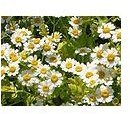Helpful Herbal Remedies for Migraines: Find Serious Relief with Herbs
Migraines and Herbs
Migraine headaches are very intense and can last for hours if not days. They are characterized by throbbing pain that can border on unbearable. Other symptoms include nausea, lethargy, and sensitivities to light and sound. While it is difficult to treat a migraine headache without knowing the specific cause, there are herbs which can offer relief by improving blood circulation, easing stress and anxiety, or simply relieving pain. These herbal remedies for migraines can be taken as healing herbal teas, but other methods are sometimes more effective. Learn about the herbs, their properties, and tips for use.
Herbal Relief
The following are all beneficial either taken as a preventative measure or even to minimize the pain and suffering during a migraine.
- Cayenne stimulates circulation but also strengthens capillaries and nerves. This is a great herb to take as a healing tonic on a regular basis to try and prevent migraines. To make a tea from cayenne powder steep one teaspoon in one cup of boiling water. Stir one tablespoon of this solution into one cup of hot water. Cayenne is safe for general use and also benefits digestion.
- Feverfew has a reputation as the herb for migraines. It has anti-inflammatory and vasodilatory properties. You can drink a tea made from this herb, steeping one teaspoon in one cup of boiling water for ten minutes, or take it in tablet form. A daily dose for about a month should prevent migraines from occurring. The best way to take this herb to treat a migraine once it has already started is to chew on a fresh leaf. Do not use feverfew if pregnant. Excessive use of the fresh leaves can cause mouth ulcers.
- Passion flower is suited for treating migraines in that it relieves nerve pain and promotes restful sleep. Often used to treat insomnia it will help to calm and sooth when a migraine comes on. To be effective, take as soon as the headache comes on or as soon as signs begin. To use, make a herbal infusion with one teaspoon of the dried herb. Cover and steep for fifteen minutes. Drink up to two cups a day.
- Valerian is similar to passion flower in that it will help to ease nerve pain, stress, and tension. Use in the same way as a herbal tea, and in fact combining these two herbs for a more effective tea is helpful. Both herbs are safe for general use, although they do have sedative and hypnotic properties and should be used when you are able to relax.
- Jamaican dogwood is a more powerful pain reliever and sedative. Take this herbal remedy as soon as you know a migraine attack is coming. You can make a tea from the bark, steeping one to two teaspoons in one cup of boiling water for ten minutes or take in tincture form, 1 mL in a cup of juice or tea. Do not exceed this dosage. You can blend Jamaican dogwood with either passion flower or valerian.
- Chamomile and peppermint are both more gentle herbs to reduce pain and ease tension. They can be used during a migraine, or as a preventative measure. Chamomile and peppermint are ideal in cases where nausea is present during the migraine as they are soothing to the digestive system. Make a herbal infusion of one or both herbs together, two teaspoons infused for ten minutes in one cup of boiling water, cover while steeping. You can also make a steam inhalation, placing one ounce total of the dried herbs in a glass bowl. Add two quarts of boiling water and inhale for ten minutes.
Aside from feverfew which cannot be used during pregnancy as it can stimulate uterine contractions, the rest of these herbs are safe for general use. If you are pregnant, nursing, or on any prescription medication make sure you talk to your doctor regardless before using herbal remedies for migraines.
Using these herbs either to try and prevent attacks or even to relieve a migraine as it happens is a great tool for migraine sufferers. Eating a well-balanced diet, getting plenty of sleep, and taking measures to reduce the stress in your life is important as well.
References
Hoffmann, David. “The Complete Illustrated Holistic Herbal: A Safe and Practical Guide to Making and Using Herbal Remedies.” (Element Books, 1996).
Page, Linda. “Healthy Healing: A Guide to Self-Healing for Everyone.” Eleventh Edition (Traditional Wisdom, 2003).
photo of feverfew by Vsion (CC/wiki)
Disclaimer
Please read this disclaimer regarding the information contained within this article.
